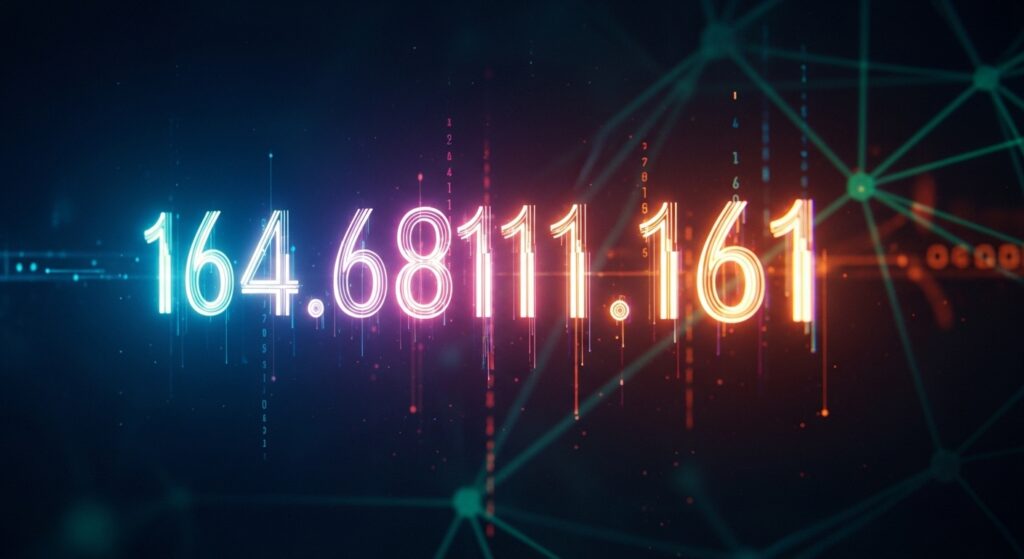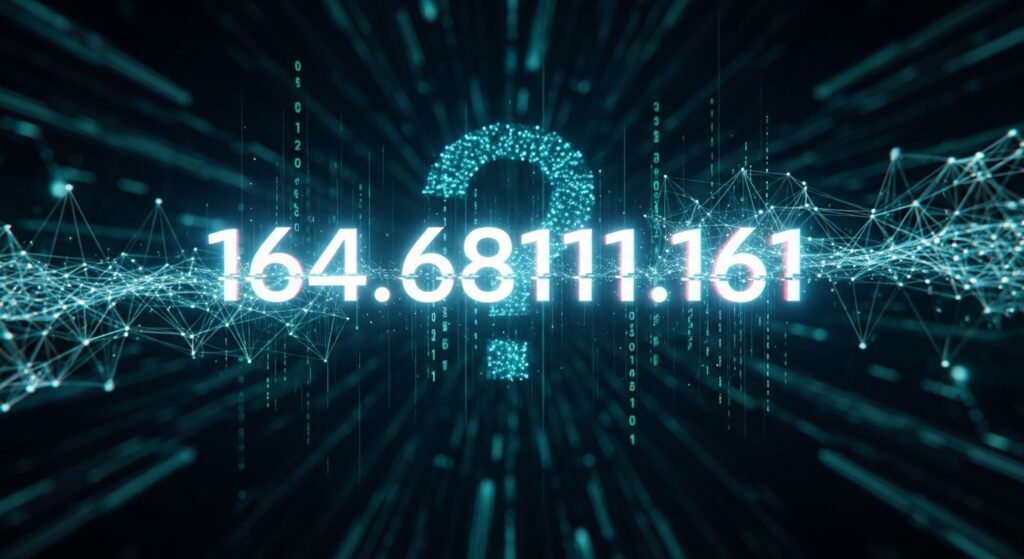Have you ever stumbled upon a number online that made you pause and wonder what it really meant? One such number is 164.68111.161. At first glance, it looks like an IP address—something we often see in the world of the internet. But when you take a closer look, you realize something doesn’t quite add up.
In this article, we’ll dive deep into the mystery of 164.68111.161. We’ll explore why it isn’t a valid IP address, where it might have come from, and why it keeps popping up online. Think of this as a detective story where we put the clues together to solve the puzzle of a strange number.
What is 164.68111.161?
At its core, 164.68111.161 is just a string of numbers separated by dots. Many people mistake it for an IP address, which is a unique identifier used for devices connected to the internet. But unlike real IP addresses, this one doesn’t pass the test.
Why? Because one of the segments, 68111, is way too large to fit into the rules of a valid IP. This small detail makes the entire sequence invalid. Still, its resemblance to an IP makes people curious and sparks questions.
Why It Looks Like an IP Address
You might be asking yourself: “If it’s not a real IP, why does it look like one?”
The reason is simple. IPv4 addresses—the most common type—use four sets of numbers separated by dots, like 192.168.1.1. Each set is called an octet.
So when people see something like 164.68111.161, their brain automatically connects it to an IP address format. It’s kind of like seeing someone in costume who looks like a celebrity—you do a double take, but on closer look, it’s not the person you thought.
Why 164.68111.161 is Not a Valid IP Address
To understand why this sequence fails, let’s break it down:
IP Address Structure Explained
-
An IPv4 address has four parts.
-
Each part must be between 0 and 255.
-
For example:
8.8.8.8(Google’s public DNS).
The Problem with 68111
The second section of 164.68111.161 contains 68111. That number is way above the maximum limit of 255. It’s like trying to fit a gallon of water into a cup—it just doesn’t work.
Common Mistakes Leading to Fake IPs
-
Typing errors: maybe someone accidentally pressed an extra digit.
-
Placeholder numbers: developers often use random numbers when testing code.
-
Misinformation: sometimes odd numbers like this spread online just because they look unusual.
Possible Interpretations of 164.68111.161

Now that we know it’s not a valid IP, let’s think about what it could really be.
Typo or Human Error
This is the simplest explanation. Maybe someone meant to type a real IP address but slipped an extra digit. Just like mistyping a phone number, the result looks real but leads nowhere.
Placeholder or Dummy Data
Software developers often use fake numbers when testing systems. It’s safer than using real IPs, and it avoids confusion with actual networks.
Debugging or Software Testing
During coding or quality assurance, unusual sequences like this are used as “stand-ins.” They’re not meant to be real, just to check if the system behaves correctly.
Database or Version Number
Some suggest 164.68111.161 could represent a database ID or even a software version. Developers use similar numbering systems to track updates.
Real-World Contexts Where 164.68111.161 Appears
It’s not just a random number floating in space. This sequence has appeared in surprising places online.
Clickbait and SEO Articles
Some websites use mysterious numbers like this as clickbait. They know people are curious, so they create posts with titles like “Unlock the Secret of 164.68111.161!”
Cybersecurity and Privacy Discussions
Tech forums sometimes discuss numbers like this to raise awareness. People wonder if it could be linked to hackers or malware, though there’s no evidence to suggest this number has any harmful use.
Tech Blogs & Forums Speculations
From Reddit threads to niche blogs, this number has sparked debates. Is it just nonsense? A hidden code? Or simply a typing error? Everyone has their own theory.
How to Spot a Fake or Invalid IP Address
So, how can you tell if an IP address is real or fake?
Tools to Validate an IP Address
There are many free online tools where you can paste an IP and check if it’s valid. If you tried that with 164.68111.161, it would instantly fail.
Red Flags of Invalid IPs
-
Numbers larger than 255.
-
Missing sections (like only three parts instead of four).
-
Strange patterns that don’t match usual IP ranges.
Best Practices When Encountering Strange Numbers
If you see an unusual IP online:
-
Don’t click on suspicious links.
-
Use trusted lookup tools.
-
Treat it like a spam email—better safe than sorry.
What 164.68111.161 Teaches Us About Digital Literacy
There’s a bigger lesson here than just one strange number.
Importance of Understanding IP Addresses
Knowing the basics of IP addresses helps you navigate the internet safely. You don’t need to be a tech expert—just being able to spot what looks “off” can save you trouble.
Why Fake or Wrong Numbers Spread Online
Sometimes, fake numbers spread because they look mysterious. It’s like urban legends: people share them without checking the facts.
Role in Cyber Awareness
Numbers like this remind us to stay alert online. Not everything you see is what it seems. By asking questions and verifying, you strengthen your digital literacy.
Conclusion: The Final Word on 164.68111.161
At the end of the day, 164.68111.161 is not a real IP address. It’s most likely a typo, a placeholder, or just a curiosity that spread online. While it doesn’t connect to any device or server, it does connect to something far more important—our curiosity.
This number reminds us of how easy it is to be fooled by appearances on the internet. By learning a bit more about how IP addresses really work, we can avoid confusion and stay safe online.
Frequently Asked Questions (FAQs)
1. Is 164.68111.161 a real IP address?
No, it isn’t. The number 68111 makes it invalid since IP segments cannot exceed 255.
2. Why does 164.68111.161 look like an IP address?
Because it follows the dot-separated format of IPv4 addresses, even though the values don’t match the rules.
3. Could 164.68111.161 be linked to hacking or malware?
There’s no evidence suggesting that. It’s more likely a typo or placeholder used in testing.
4. What should I do if I see a strange IP online?
Always verify it using a trusted IP lookup tool. If it looks suspicious, avoid clicking or engaging with it.
5. Could 164.68111.161 represent something else, like a version number?
Yes, it’s possible. Some believe it could be a database ID or software build number rather than an IP.


